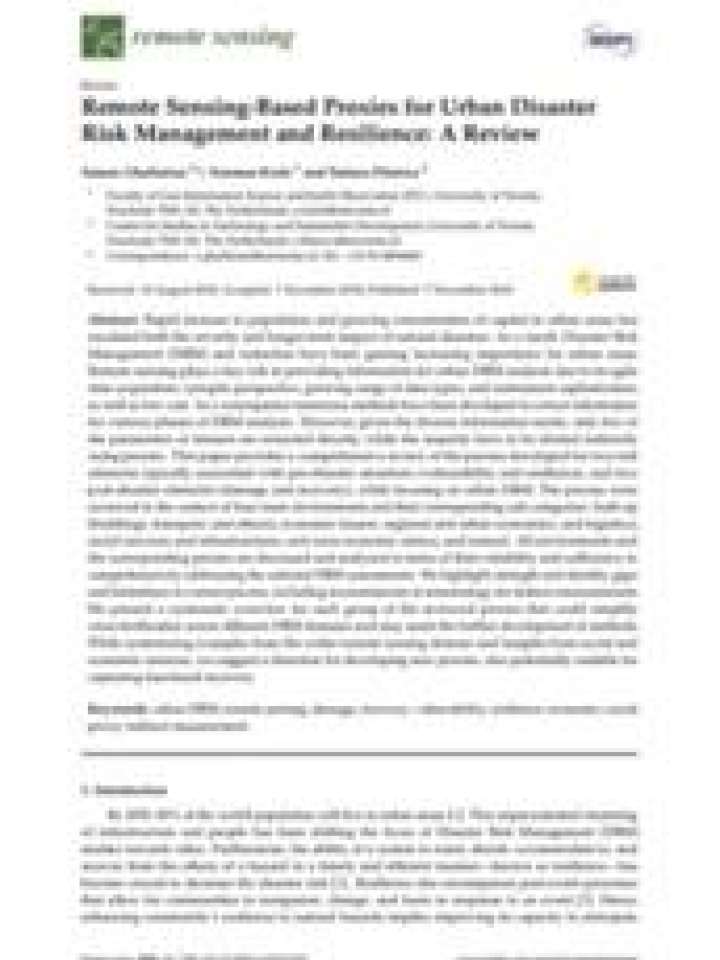Remote sensing-based proxies for urban disaster risk management and resilience: A review
Rapid increase in population and growing concentration of capital in urban areas has escalated both the severity and longer-term impact of natural disasters. As a result, Disaster Risk Management (DRM) and reduction have been gaining increasing importance for urban areas. Remote sensing plays a key role in providing information for urban DRM analysis due to its agile data acquisition, synoptic perspective, growing range of data types, and instrument sophistication, as well as low cost. As a consequence numerous methods have been developed to extract information for various phases of DRM analysis. However, given the diverse information needs, only few of the parameters of interest are extracted directly, while the majority have to be elicited indirectly using proxies.
This paper provides a comprehensive review of the proxies developed for two risk elements typically associated with pre-disaster situations (vulnerability and resilience), and two post-disaster elements (damage and recovery), while focusing on urban DRM. The proxies were reviewed in the context of four main environments and their corresponding sub-categories: built-up (buildings, transport, and others), economic (macro, regional and urban economics, and logistics), social (services and infrastructures, and socio-economic status), and natural. All environments and the corresponding proxies are discussed and analyzed in terms of their reliability and sufficiency in comprehensively addressing the selected DRM assessments.
The paper highlights strengths and identifies gaps and limitations in current proxies, including inconsistencies in terminology for indirect measurements. The authors present a systematic overview for each group of the reviewed proxies that could simplify cross-fertilization across different DRM domains and may assist the further development of methods. While systemizing examples from the wider remote sensing domain and insights from social and economic sciences, the authors suggest a direction for developing new proxies, also potentially suitable for capturing functional recovery.
Explore further
